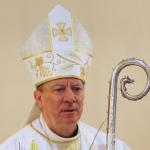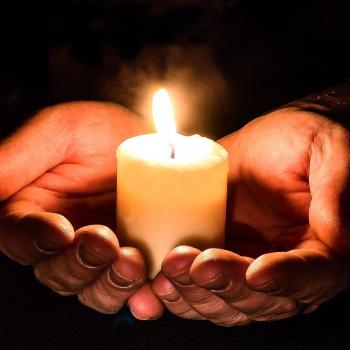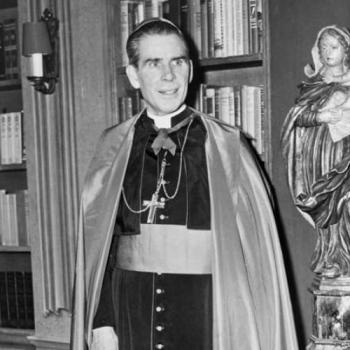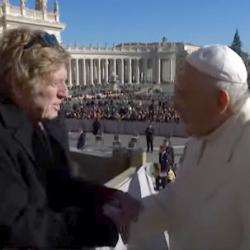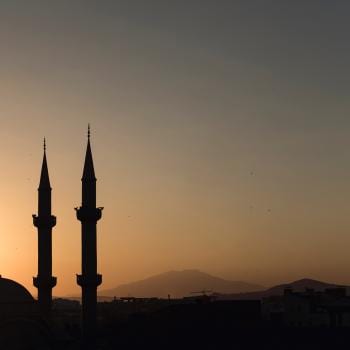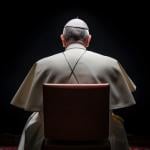A few people read my remembrance of a beloved parish priest and were puzzled by one reference. A couple have asked me, “What’s the ‘Mass of Transferal’?”
I thought this a good opportunity to repost something from a few years ago that explains the customs surrounding the burial of a priest—including that particular Mass.
Fr. Joshua Janko blogged about this a few years ago:
What are some of the traditional practices that accompany a priest when they die?
Well, I should first start out in sharing a traditional practice that was part of my own ordination. The traditional practice includes the newly ordained priest having his hands consecrated with the oil by the Bishop. Soon after, he would cleanse his consecrated hands with a white cloth called a maniturgium. The newly ordained would present the maniturgium to his mother at his Mass of Thanksgiving. These white cloths are traditionally given to the new priest’s mother to symbolize the gift of her son to the service of the Church. Father Zimmer and Father McCormack most likely would have given these white clothes to their own mothers which would have been buried with them when they died before their sons. The tradition goes that when the mother of a priest gets to the gates of Heaven, Saint Peter would ask her: “What did you give to God during your life?” The mother can respond: “I gave God one of my sons.”
Another custom when a priest dies is for him to be buried in his clerics and then vested in a white chausible. At Father Zimmer’s Funeral Mass, the priest shared in the homily that he had been vested by Father Zimmer on the day of his own ordination. Then, he had the experience of helping vest the body of Father Zimmer in preparation for his funeral. Additionally, the lid of the casket of a priest is removed during the hours of the visitation so the family, friends and all the faithful who the priest has ministered to over the years are able to pay their last respects and say a prayer. With Father McCormack, he was vested in the white vestments that were worn by Bishop Higi when the new Church of Saint Alphonsus Liguori was dedictated in 2004. And, some may have noticed during the hours of the visitation that Fourth Degree Knights of Columbus were stationed near the body of Father McCormack. Father was himself a Fourth Degree Knight and former chaplain of the Our Lady of Perpetual Help Council #12510.
There are also many traditions and practices that revolve around the chalice of a priest who has died. Oftentimes, when a priest is ordained, his family helps to support him in getting the chalice that he will use in his ministry, especially when he celebrates the Holy Sacrifice of the Mass. There is a great deal of sentimental value attached to a priests chalice. There is in essence a legacy attached to the chalice of a priest. So, it has been a traditional custom for a deceased priest to will his chalice to another priest or a man studying to be a priest (a seminarian) so that the “legacy” of the deceased priest’s ministry may live on. For instance, the chalice that my family helped me get prior to my ordination in 2006 has symbols and images which have helped me to focus even more when I am celebrating the Mass. When I was looking for a chalice, I ended up finding a beautiful old chalice that just needed to be refurbished and refinished so that I could then take it up and put it to good use. My chalice had actually been used for many years prior to myself by another priest. I do not know the name of that priest, but whoever he is, I remember him in my prayers at the Mass. His legacy in a sense lives on because his chalice is still being used by me today. The chalice, like some of the priest vestments, is very important in the life of a priest. After a priest dies, there is a hope that the chalice will continue to be used by other priests while celebrating the Sacred Liturgy…
…And, finally, I will mention one last custom that involves the position of a priest at his own funeral. Normally, the body is placed so that the feet face the altar. However, at a priest’s funeral, the priest’s casket is placed opposite with the head towards the altar. This is symbolic of the position that the priest was in when he celebrated the Mass, and so it is that he would be positioned in the same way at his very last Mass – his own funeral Mass. We hear from Psalm 110:4: “You are a priest forever, in the order of Melchizedek.”
Another detail is the Mass of Transferal, which Father John Trigilio discussed a few years ago:
Mass of Transferal is a funeral Mass of a Priest the day/evening/night before the day of Burial. It is called ‘transferal’ since the body is transfered from the funeral home to the church where the priest is viewed in a casket with the lid removed. This allows the parishioners and brother priests to view the body in the church (where a priest does his most important work while alive). The Mass the day before also allows more people to attend the funeral since it is often the evening before the day of burial and many parishioners and priests cannot attend the Funeral Mass on the very day of burial. Since a priest offers the Holy Sacrifice of the Mass, it is one final honor that he is afforded two Masses when he dies; the Mass of Transferal and the Mass of Burial.
Pray for all our beloved dead!

